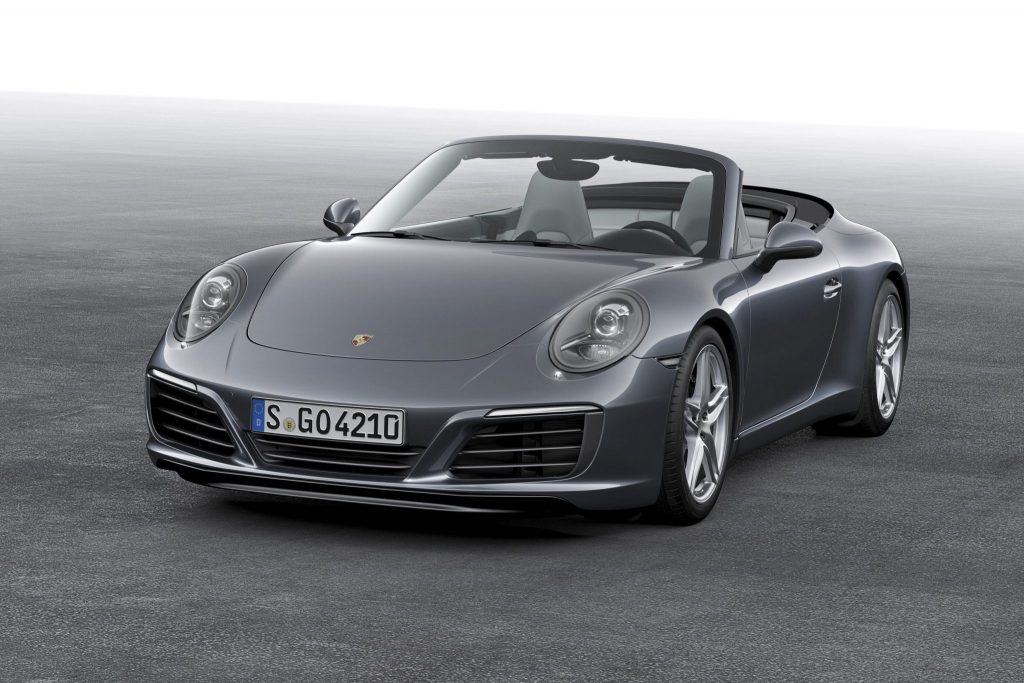New engines, an advanced chassis, new Porsche Communication Management
A new Porsche 911 is always highly anticipated – and the latest generation announced today is no exception.
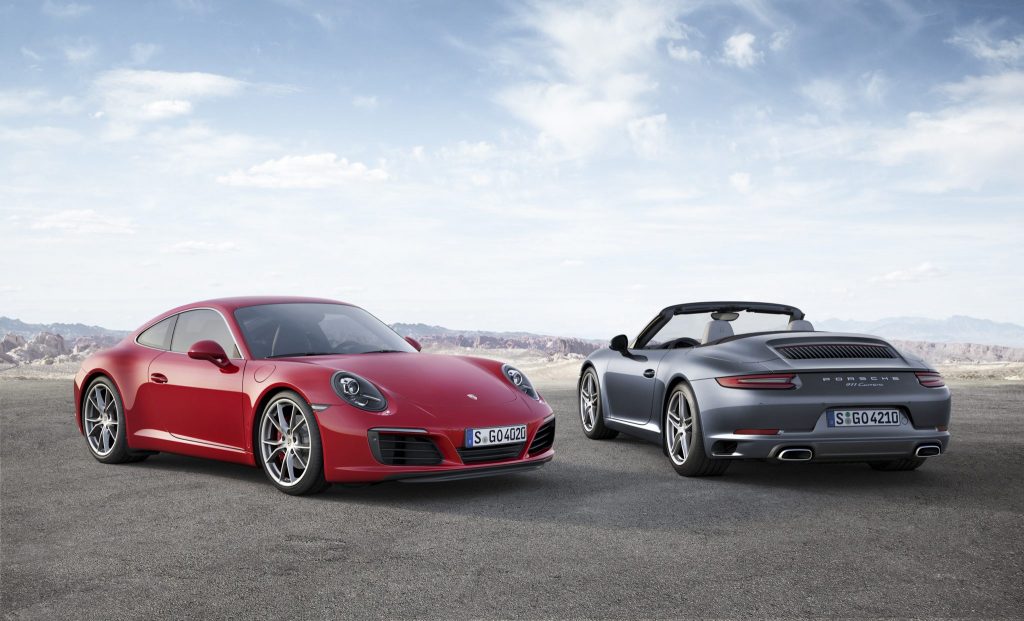
The core appeal of the rear-mounted flat-six engine in the 911 and its characteristic sporting driving experience resonate with owners and enthusiasts alike. This reputation for responsive and dynamic performance, forged both on the road and race track, coupled with unparalleled everyday usability, underpins the unstinting appeal of the 911.
The 911 has been the world’s best-selling sports car for decades. Now, the new generation has arrived, equipped to extend this status ever ahead into the future. New highlights include innovative twin-turbocharged flat-six engines, an advanced chassis with an even greater spread between performance and comfort, and a new infotainment system. With the benefit of more than four decades of experience with turbocharging – in both motor racing and production sports cars – the new engines in the new 911 Carrera set benchmarks in terms of performance, driving pleasure and efficiency.
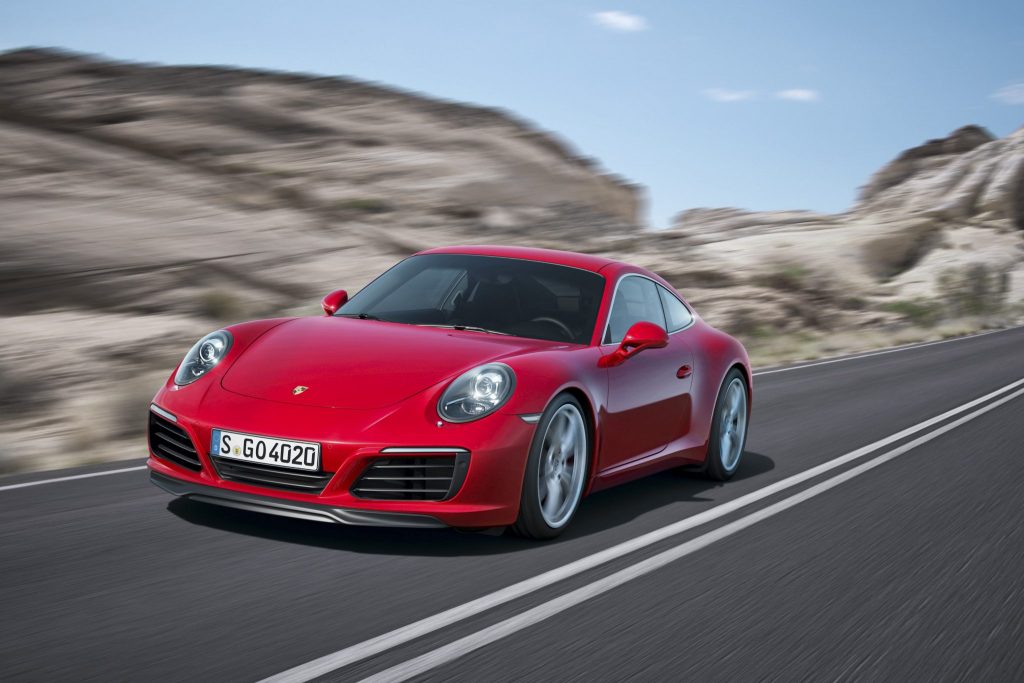
The new option of rear-axle steering, available on the Carrera S models for the first time, further extends the range of dynamic virtuosity. The fastest lap time around the North Loop of the Nürburgring is reduced to 7 minutes and 30 seconds – ten seconds faster than before.
Many exterior features of the 911 Carrera have been visually refined: these include new headlights with four-point daytime running lights, handles inset to the door panel without recess covers, a redesigned engine lid with vertical louvres and new tail lights – including the now characteristic four-point brake light Porsche motif. Inside, a new Porsche Communication Management with an enhanced multi-touch display console offers a considerably expanded range of functions and greatly simplified operation.
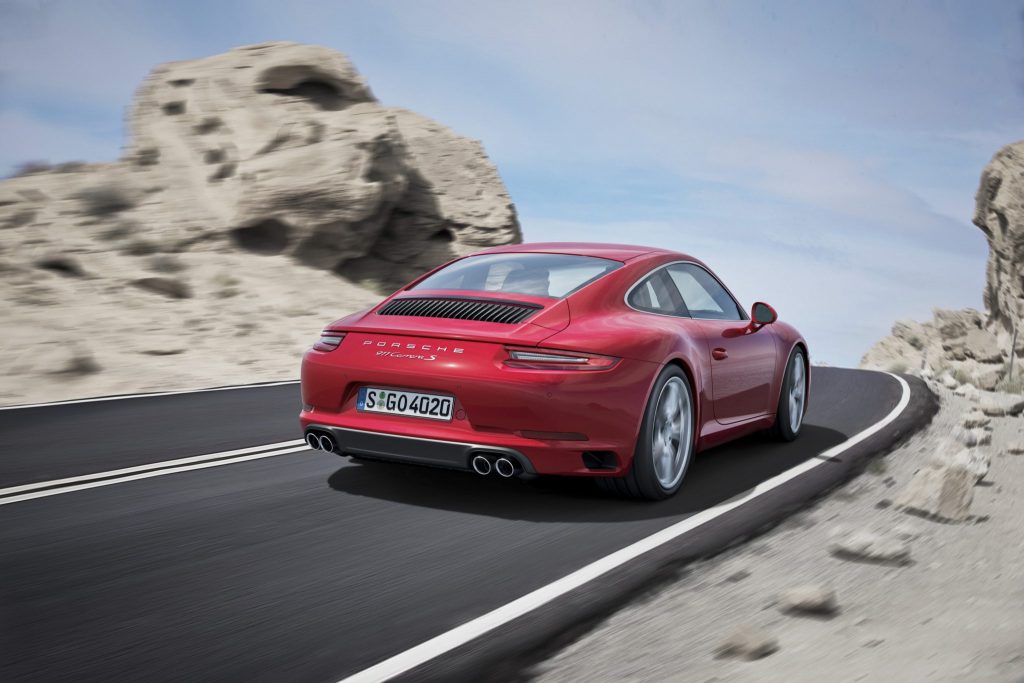
New turbocharged engines: 20 hp more and increased efficiency
The completely new engine generation with twin turbocharging now featured in the 911 Carrera has raised power, efficiency and also intensified the emotional driving experience. As is typical of the 911, at the rear of the Carrera lies a 3.0-litre flat-six engine, developing 370 hp (272 kW). The 3.0-litre flat-six in the Carrera S now delivers 420 hp (309 kW). In both cases this represents a power boost of 20 hp (15 kW) over the prior model. The 911 Carrera S produces more horsepower courtesy of turbochargers with modified turbine compressors, a specific exhaust system and tuned engine management.
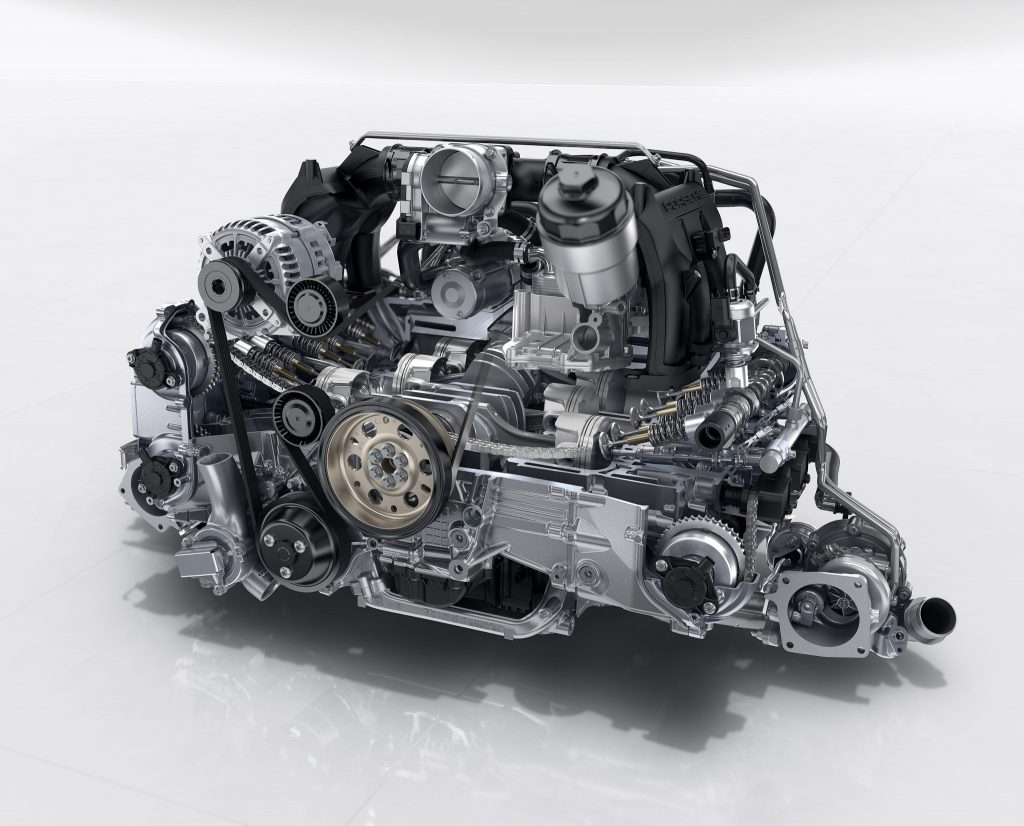
The new Porsche engines are characterised by significantly increased torque (60 Nm in each case), and with maximum torque of 450 Nm and 500 Nm respectively delivered constantly from 1,700 rpm up to 5,000 rpm in both cases, thus ensuring responsive performance. At the same time, with a maximum engine speed of 7,500 rpm the new generation clearly exceeds the top revs of conventional turbo engines – and, of course, both are underscored by the typical sonorous Porsche flat-six engine sound.
Every new 911 generation boasts enhanced performance and efficiency compared with their predecessors. The 911 Carrera Coupé with Porsche-Doppelkupplung (PDK) and Sport Chrono Package sprints from zero to 62 mph in 4.2 seconds – making it two tenths of a second faster than its predecessor. The 911 Carrera S with PDK and Sport Chrono Package achieves this benchmark in just 3.9 seconds (also 0.2 secs swifter). This means that it is the first 911 in the Carrera family to undercut the magic four second mark. And the top speeds of both models have also increased further: the 911 Carrera now has a top speed of 183 mph (an increase of 4 mph), while the 911 Carrera S now reaches 191 mph (an increase of 3 mph).
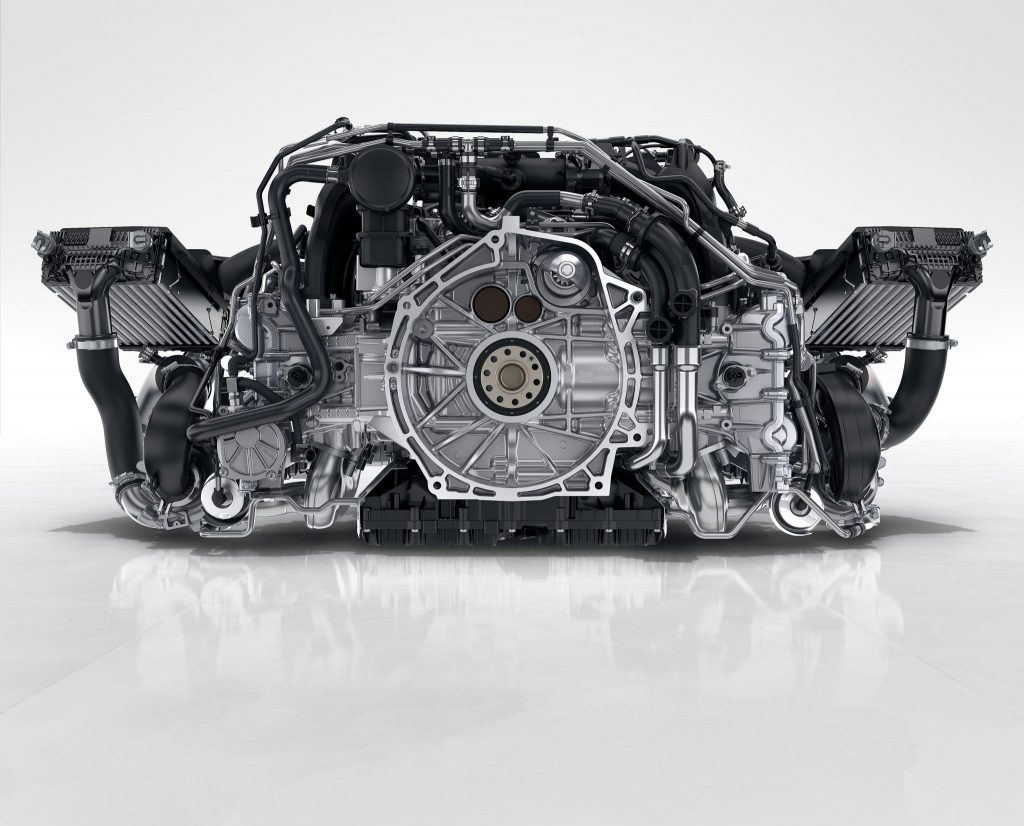
The Porsche 911 has always balanced performance and efficiency, sportiness and everyday usability. The new engines further extend the span of these apparent contradictions. Depending on the model, the 911 is now almost 12 per cent more efficient. The 911 Carrera with PDK transmission returns 38.2 mpg Combined (an increase of 3.8 mpg), while the 911 Carrera S with PDK consumes 36.7 mpg Combined (an increase of 4.2 mpg).
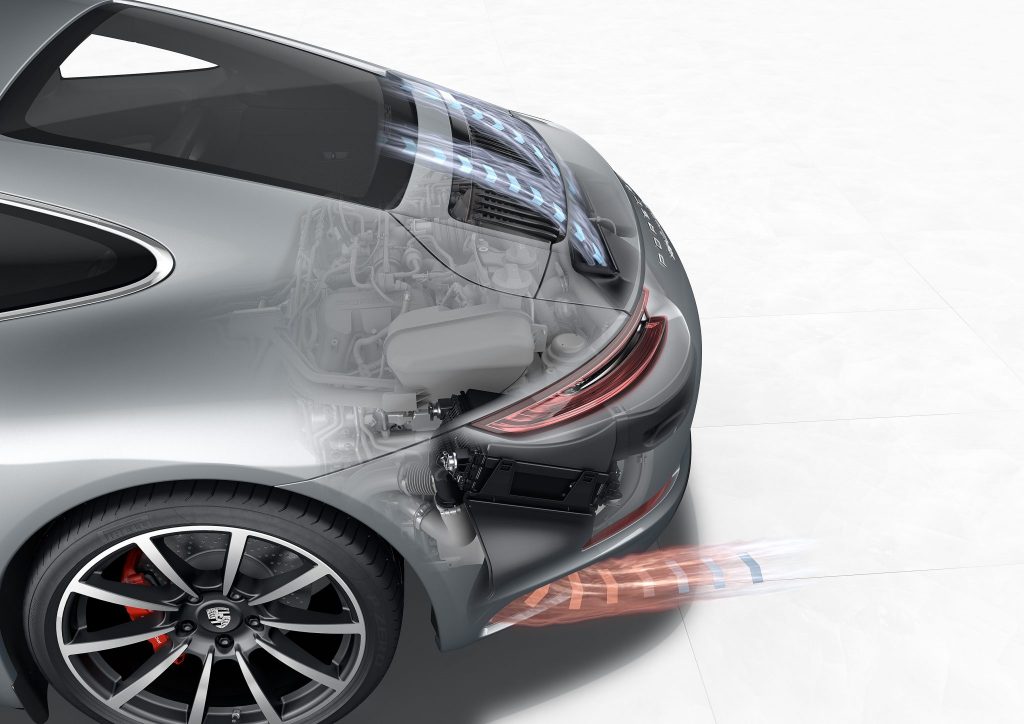
In terms of emissions, this translates to 169 g/km CO2 for the Carrera PDK and 174 g/km CO2 for the Carrera S PDK – placing both these models in Band H for the purposes of vehicle excise duty.
Enhanced Sport Chrono Package option with ‘mode switch’
In conjunction with the optional Sport Chrono Package, the 911 Carrera now features a ‘mode switch’ on the steering wheel, derived from the hybrid mode switch of the 918 Spyder. The mode switch consists of a rotary control with four positions for the driving settings “Normal”, “Sport”, “Sport Plus” and “Individual”. Depending on the car’s specification, the latter setting enables drivers to configure their own individual vehicle set-up; eg Porsche Active Suspension Management (PASM), PDK transmission shifting strategy and sports exhaust system.
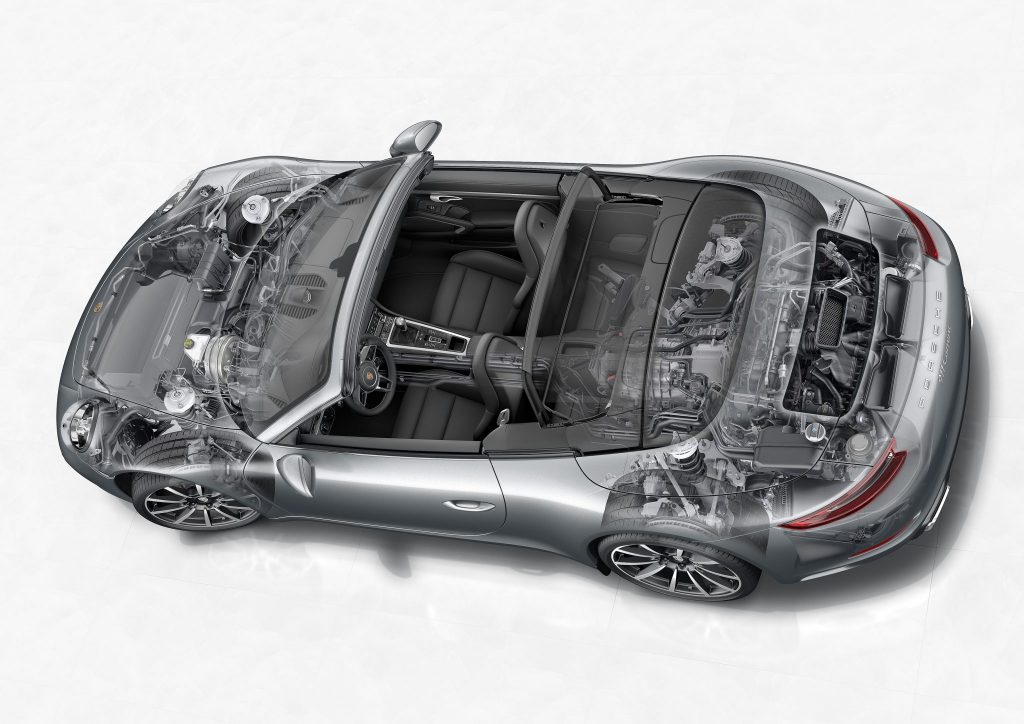
In combination with the PDK, the mode switch has an additional “Sport Response Button”. When this is pressed, the drivetrain is pre-conditioned for maximum acceleration for 20 seconds, in anticipation of an overtaking manoeuvre, for example. For a short time, the optimum gear is engaged and the engine management adjusted to an even more spontaneous response.
A standard feature: re-engineered PASM chassis lowers ride height by 10mm
The 911 Carrera is the benchmark for driving dynamics of all-round sports cars. With every new generation, Porsche further increases the spread between everyday comfort and track driving performance. For the first time, the new PASM (Porsche Active Suspension Management) chassis, which lowers the ride height by ten millimetres, is a standard feature of every Carrera model. It further improves stability during fast cornering. At the same time, new dampers enhance comfort thanks to an even more precise response characteristic as well as improving body control during dynamic driving. The new wheel designs with five slim twin spokes carry tyres with reduced rolling resistance and enhanced performance. Furthermore, on all variants the width of the rear rims has increased by 0.5 to 11.5 inches. The rear tyres of the 911 Carrera S now measure 305 instead of 295 millimetres.
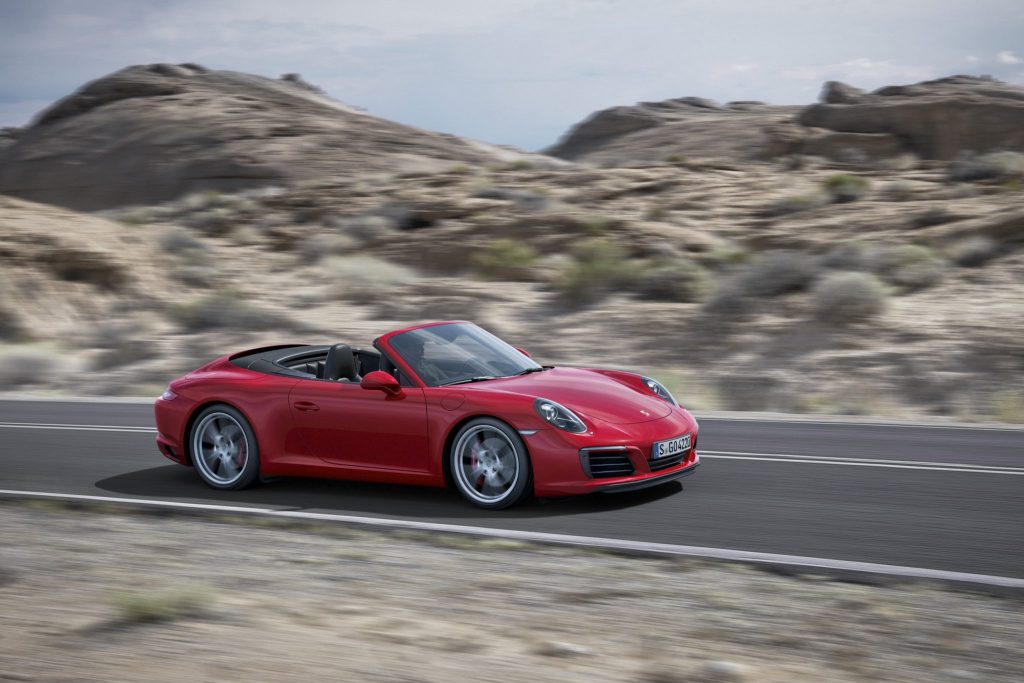
The active rear-axle steering that is available as an option for the 911 Carrera S is chassis technology adopted from the 911 Turbo and 911 GT3 (and 918 Spyder).
It further enhances the turn-in behaviour of the 911. In addition, it makes for high driving stability when changing lanes at high speeds. It also ensures greater manoeuvrability in city traffic thanks to the turning circle reduction of 0.5 metres. The improved handling is transmitted to the driver via the new steering wheel design, based on that fitted in the 918 Spyder. The basic steering wheel has a diameter of 375 millimetres; the optional ‘GT sport’ steering wheel measures 360 millimetres.
For unlimited everyday practicality, customers can choose a hydraulic lift system with integrated lifting cylinders in the struts of the front axle. Pressing a button increases the ground clearance at the nose by 40 millimetres within five seconds and thus prevents the vehicle underbody from hitting the ground, when traversing steep garage exits for example.
New Porsche Communication Management including Online navigation
The new 911 Carrera models feature a development of the Porsche Communication Management System (PCM) including Online satellite navigation and voice control. The PCM can be operated by performing multi-touch gestures on the seven-inch display, similar to operating a smartphone. User inputs by handwriting are also possible. Mobile phones and smartphones can now also be connected via Wi-Fi and Bluetooth™. The smartphone tray is integrated for the first time in the centre armrest, offering battery-saving charging and optimised mobile phone reception. Also new is the option of connecting an iPhone® to the PCM to use Apple CarPlay®.

Real-time traffic information is available for significantly improved route navigation. It gives the driver a quick overview of the traffic situation and guarantees dynamic adaptation of the route to this information. Google Earth® and Google Streetview® are also being integrated for the first time to offer better orientation. Other components of the PCM are Porsche Car Connect and the Porsche Connect app, which can be used for such functions as remote control of vehicle functions, transfer of destinations to the PCM for navigation and use of music streaming services by third-party providers via the PCM.
New and extended optional assistance systems
An extended range of new and improved assistance systems are available on the new 911. The optional automatic speed control can now also brake moderately when the pre-set speed is exceeded, for example when driving downhill. Furthermore, the Adaptive Cruise Control (ACC) option now has a coasting function in conjunction with the PDK transmission. When driving in a queue the clutches are disengaged, thus saving fuel with unpowered coasting. The optional Lane Change Assist monitors traffic behind with radar and uses LED lamps in the left and right of the mirror triangle to warn the driver about approaching vehicles in the blind spot. In addition, Porsche increases active safety with the multi-collision braking system as a standard feature.
Market launch in December
The new Porsche 911 Carrera models are on sale now in the UK and Ireland, and first deliveries will arrive in Porsche Centres in December.
| 911 Carrera Coupe | £76,412 (RRP) |
| 911 Carrera S Coupe | £85,857 (RRP) |
| 911 Carrera Cabriolet | £85,253 (RRP) |
| 911 Carrera S Cabriolet | £94,698 (RRP) |
Standard equipment on every 911 Carrera includes leather interior, sports seats, Porsche Communication Management (PCM) including satellite navigation system with seven-inch colour touchscreen, universal audio interface offering telephone module and MP3 connectivity, dual-zone automatic climate control, SPORT button, Bi-Xenon headlights, Porsche Active Suspension Management (PASM), Porsche Stability Management (PSM), tyre pressure monitoring, Porsche Vehicle Tracking anti-theft system, three year warranty and three year roadside assistance package.
Customers will also be able to explore the potential of their new car by participating in a complimentary course at the Porsche Experience Centre, Silverstone.
40 years’ turbo experience in motorsport and series production
At Porsche, innovations and developments that have proved themselves under extreme racing conditions always benefit production models, too. Testing in motorsport in particular ensures the performance and resilience of new engines for production sports cars. In the development of turbocharged six-cylinder ‘boxer’ engines Porsche can therefore look back on more than 40 years’ experience.
For example, turbocharging with a bypass valve was first used in 1972 in the 917/10 racing car before entering series production two years later in 1974, in the first 911 Turbo. In 1974, charge air cooling was also first introduced in the 917/10. In 1977, this technology then celebrated its premiere in the 911 Turbo 3.3. Further milestones in the development of turbo engines include sequential turbocharging with two consecutive turbos (for the first time in the 959 supercar), twin-turbocharging with two parallel turbos (for the first time in the 911 Turbo, Type 993) and adjustable intake valves (for the first time in the 911 Turbo, Type 996).
